By Eric Vandenbroeck
and co-workers
China's Next Technological Revolution
In 2007, when Apple
first started making iPhones in China, the country was better known for cheap labor
than technological sophistication. At the time, Chinese firms could not produce
almost any of the iPhone’s internal components imported from Germany, Japan,
and the United States. China’s overall contribution to the devices was limited
to the labor of assembling these components at Foxconn’s factories in
Shenzhen—which amounted to less than four percent of the value-added costs.
The situation had
dramatically changed by the time the iPhone X was released in 2018. Not only
were Chinese workers continuing to assemble most iPhones, but Chinese firms
were producing many sophisticated components inside them, including acoustic
parts, charging modules, and battery packs. Having mastered complex
technologies, these firms could produce better products than their Asian and
European competitors. With the latest generation of iPhones, this pattern
has only accelerated. Today, Chinese tech firms account for over 25 percent of
the device’s value-added costs.
Although the iPhone
is a special case—as one of the most intricate pieces of hardware, it relies on
an exceptional range of technologies—its expanding footprint in China captures
a broader trend. Chinese firms have moved beyond assembling foreign-made
components to producing cutting-edge technologies in most manufactured goods.
Along with its dominance of renewable power equipment, China is now at the
forefront of emerging technologies such as artificial
intelligence and quantum computing. These successes challenge the
notion that scientific leadership inevitably translates into industrial
leadership. Despite relatively modest contributions to pathbreaking research
and scientific innovation, China has leveraged its process knowledge—the
capacity to scale up whole new industries—to outcompete the United States
in a widening array of strategic technologies.
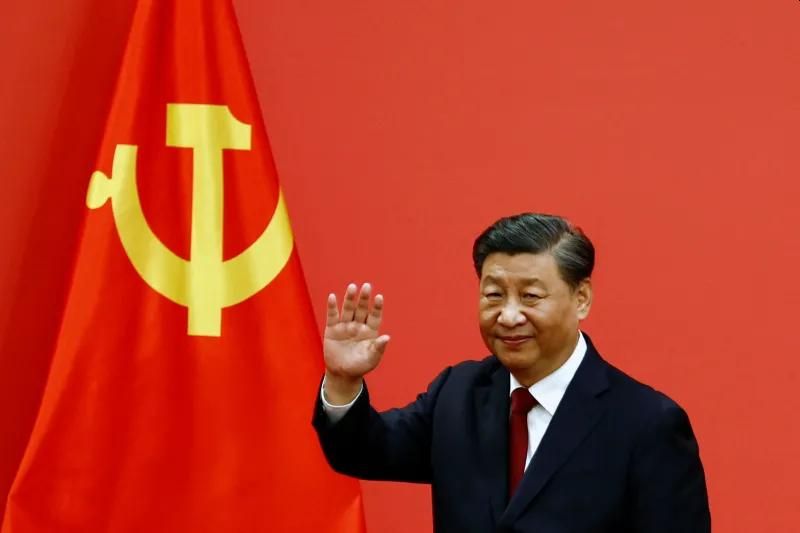
In its growing
rivalry with Beijing, the U.S. government has sought to limit Chinese access to
critical Western technologies and reinforce its tradition of scientific
innovation. Thus, in 2022, the Biden administration imposed broad new
restrictions on selling advanced Western chip technology to Chinese firms while
bolstering U.S. technology through the $280 billion CHIPS and Science Act.
Besides the Inflation Reduction Act, that piece of legislation meaningfully
helps the United States recover some of its leadership in producing
semiconductors and renewables. But the steadily advancing technological prowess
of Chinese firms suggests that this approach may be missing a more central
issue: China’s rise is not merely the result of copying and stealing
from Western firms; nor has it depended on scientific breakthroughs. To a
significant degree, it has been fueled by improvements in China’s industrial
capabilities—gains from the country’s vast and sophisticated manufacturing
workforce. Already, these strengths are apparent in China’s response to U.S.
chip restrictions of the past few years. Previously, Chinese firms avoided domestic
Chinese technologies, preferring to buy the best—usually American. Now that
Washington is preventing them from doing so, they are working harder to
cultivate a thriving domestic chip industry.

China’s arrival as a
major tech power holds crucial lessons for the United States and its allies.
Unlike the West, China has grounded its technology sector not in glamorous
research and advanced science but in the less flashy task of improving
manufacturing capabilities. If Washington is serious about competing with
Beijing on technology, it must focus on far more than trailblazing
science. It must also learn to harness its workforce the way China has to bring
innovations to scale and build products better and more efficiently. For the
United States to regain its lead in emerging technologies, it must treat
manufacturing as an integral part of technological advancement, not a mere
sideshow to the more thrilling acts of invention and R&D.
China’s Moonshots
Many observers are
justifiably skeptical about China’s tech leadership. For one thing, the country
has created few multinational firms or globally recognized brands. Unlike Japan
and South Korea, China has failed to establish new consumer electronics
categories, such as digital cameras or game consoles, nor has it been able to
compete with Europe and the United States in automobiles or airliners. Instead,
for the most part, Chinese companies have concentrated on making products they
can sell at lower prices in the developing world. The relative lack of
prominent Chinese brands has reinforced a Western understanding of China as a
factory floor rather than a hotbed of innovation.
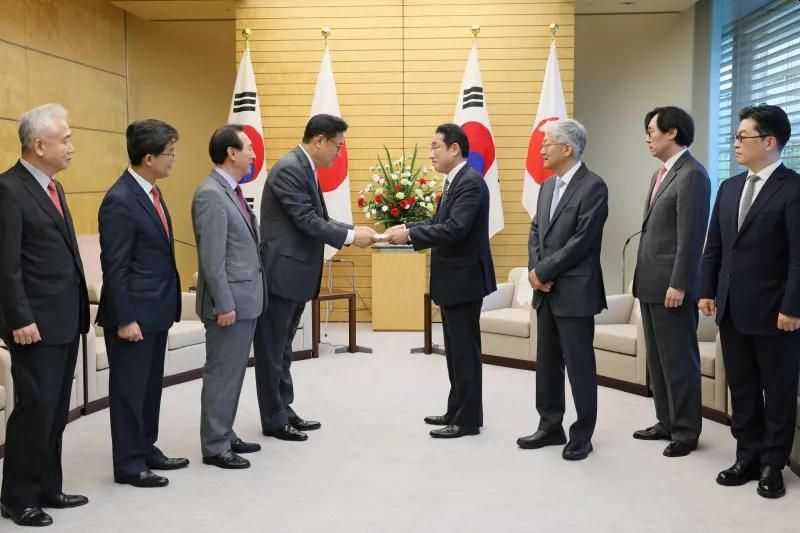
China also remains
well behind the West in several critical technologies. China’s chip industry has
a few notable achievements, including designing mobile phone chips and certain
advanced memory chips. But in fabricating logic chips—the processors inside all
digital products—Chinese firms are at least five years behind TSMC. This
Taiwanese company is the global leader in advanced semiconductors. They are
even weaker when developing the specialized tools required for making chips.
For the all-important lithography machines, used for printing patterns on
silicon wafers, and metrology equipment, used for quality control in a
production process that demands hundreds of steps, Chinese firms rely
overwhelmingly on imports from Japan, the United States, and Europe. And they
are barely out of the starting gate in creating the software tools needed to
design the most advanced chips.
A similar dynamic
exists in China’s aviation industry. Consider the Commercial Aircraft
Corporation of China (COMAC), China’s answer to Airbus and Boeing, a
state-owned venture backed by an estimated $71 billion in government funding.
Fifteen years after its founding, it has scarcely begun to produce its first
operational commercial airliner. Chinese firms in both the chip and the
aviation industries are achingly aware that many of their core components
continue to be supplied by the West: production equipment and advanced software
tools in the case of chip manufacturers, and the engine as well as the avionics
systems in the case of COMAC jets. This kind of reliance on Western technology
gives new U.S. chip restrictions the potential to throw Chinese firms into
turmoil.
But amid these
serious vulnerabilities, China is progressing rapidly in many other
technologies. Chinese firms have quickly gained ground against their European
and Japanese counterparts in producing advanced machine tools such as robotic
arms, hydraulic pumps, and other equipment. As the iPhone demonstrates, China
now rivals Japan, South Korea, and Taiwan in its mastery of the electronics
supply chain. And in the digital economy, despite recent efforts by President Xi
Jinping to tighten government control of Internet companies such as
Alibaba, Tencent, and Didi, China remains strong. Chinese companies can still
offer spirited competition to Silicon Valley’s tech giants, as ByteDance’s TikTok has been doing to Facebook. China leads
the world in building modern infrastructure, including ultrahigh-voltage
transmission lines, high-speed rail, and 5G networks. In 2019, China became the
first country to land a rover on the far side of the moon; a year later,
Chinese scientists achieved quantum-encrypted communication by satellite,
pushing the country closer to creating unbreachable quantum communications.
These achievements are emblematic of China’s steady effort to master more and
more difficult tasks.
Taken as a whole,
then, China’s technological development is considerably more dynamic than the
country’s image suggests. China remains behind in several critical areas, and
some of its most important tech firms face regulatory squeezes—whether from
Washington or Beijing. Despite these challenges, Chinese industries are
reaching world-class standards, and science is steadily advancing. Along the
way, Chinese firms have begun to make significant innovations, including in
strategic areas that the United States has prioritized.
Solar Superpower
One of China’s major
tech triumphs in recent years has been in renewable power equipment. When a
commercial market emerged for solar technologies early in the twenty-first
century, most innovations came from the United States. It seemed logical that
U.S. firms would drive the industry. In 2010, however, China’s State Council,
the central government’s executive branch, designated solar power
generation as a “strategic emerging industry,” triggering a cascade of
government subsidies and business creation, much of it aimed at expanding
manufacturing capacity. In the process, Chinese firms learned the basics of
solar photovoltaics and began to improve existing production methods. Today,
Chinese firms dominate almost every segment of the solar value chain—from
processing polysilicon used in solar cells to assembling solar panels. They
have also advanced the technology itself. Chinese solar panels are not only the
cheapest on the market; they are the most efficient. The breathtaking decline
in solar costs over the past decade has been driven by manufacturing
innovations in China.
Over the last few
years, Chinese firms have also staked out strong positions in producing
large-capacity batteries that power electric vehicles. As the world moves away
from internal combustion engines, advanced battery technology has become the
most critical component in car manufacturing. China has led the way: CATL, a
Chinese company founded in 2011, is now the biggest battery manufacturer in the
world, partnering with major car companies such as BMW, Tesla, and Volkswagen.
In addition to having far greater manufacturing capacity than its rivals—which
matters for lowering costs—CATL has taken the lead in developing new and more
efficient chemical mixtures, for example, in its sodium-ion batteries, which
can be produced without using scarce lithium and cobalt minerals.
A battery plant in Changzhou
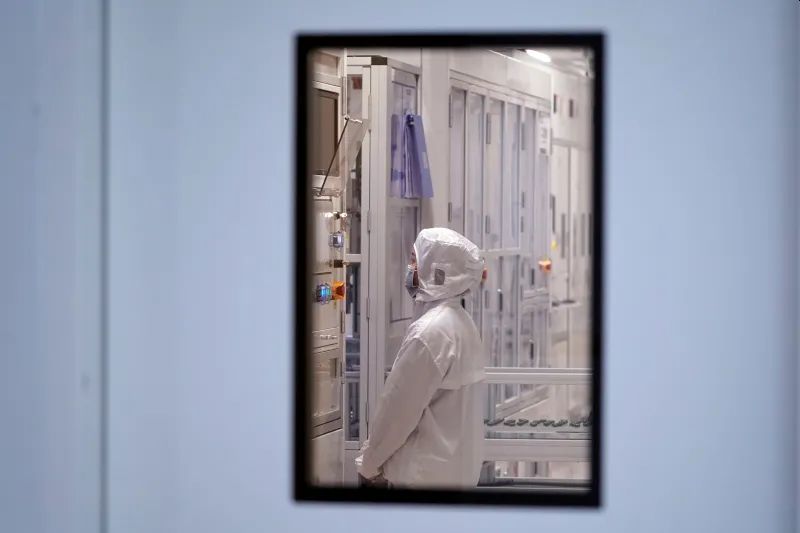
The Biden
administration has recognized the risks of depending on China for the critical
technologies it needs for the United States’ green transition. But various
rounds of U.S. tariffs and U.S. investigations into forced labor allegations in
China’s polysilicon supply chain have failed to dislodge Beijing from its
dominant position in the solar industry. One such investigation by the U.S.
Commerce Department, which threatened retroactive tariffs on up to 250 percent
of solar imports, threw American solar buyers into turmoil. In June 2022,
President Joe Biden was forced to issue an executive order forestalling any
tariffs for the next two years. Meanwhile, although Biden’s Inflation
Reduction Act, passed in August 2022, aims to dramatically accelerate the
transition to electric vehicles in the United States, the legislation is off to
a halting start because it has made many current EVs on the market
potentially ineligible for federal EV subsidies. For now, the United States and
many of its Western allies will remain significantly dependent on China in
their drive to decarbonize.
China has yet to
achieve dominance in such industries as solar components, EV batteries, and
electronics in a vacuum. This rapid progress directly connects to the country’s
manufacturing and quality control strengths. From the early 1990s to today, the
Chinese workforce has moved from producing simple toys and textiles to
conducting the extraordinarily complex operations needed to produce
sophisticated electronics such as the iPhone. Along the way, Chinese firms have
often made significant advances. In China, tech innovations have come not from
universities and research labs but through the learning process generated by
mass production itself. At the heart of the country’s ascendancy in advanced
technology is its spectacular capacity for making things.
Better Chefs, Better Omelets
By any account,
China’s technological progress has come at an enormous cost. In the most
generous reading, Beijing has established the country’s position through a
fantastic waste of government resources. These giant subsidies have a
distorting effect: a study published in December by the National Bureau of
Economic Research in Cambridge, Massachusetts, found that Beijing has a poor
record of picking winners, and the recipients of Chinese government subsidies
tend to have lower productivity growth. More often, according to many critics,
Chinese advances have been spurred by extreme protectionism and widespread
intellectual property theft.
Although there is
some truth to all these claims, they are insufficient to account for China’s
rise. For every example of a Chinese industry that has benefited from
protectionism—such as the Internet platform Baidu, which thrived behind the
Great Firewall—there is another, such as China’s car industry, for which such
measures have failed to produce world-class companies. Forced technology
transfers and intellectual property theft may have helped develop some
industries, and it is right for the United States and its allies to push back
on these practices. But they do not explain China’s emergence in such fields as
batteries, hydrogen, and artificial intelligence.
Instead, the most
important factor in China’s burgeoning tech industries is its manufacturing
ecosystem. Over the past two decades, China has developed an unrivaled
production capacity for tech-intensive industries, characterized by a deep
labor pool, dense clusters of suppliers, and extensive government support. This
strength draws in part on China’s industrial history. In earlier decades, the government
gave industry special importance: disastrously during Mao Zedong’s Great Leap
Forward and more effectively under Deng Xiaoping in his Four Modernizations.
Beginning in the 1990s, central government initiatives were less important than
market drivers, with China’s manufacturing capacity taking off in the wake of
the country’s accession to the World Trade Organization in 2001.
Over the past
decade, Xi has put China’s industrial obsession into overdrive. Two
years after taking office, he launched Made in China 2025—a sweeping policy
framework aimed at lifting China’s manufacturing base from labor-intensive
industries to high-technology sectors. And in 2021, in its latest five-year
plan, the central government announced a campaign to turn China into a “manufacturing
superpower.” That is not an idle goal: over the past few decades, Beijing has
directed vast sums of cheap credit and energy to advanced tech firms, even when
they are far from profitability.
Beijing’s
manufacturing-driven approach has become critical to its ability to challenge
the West in advanced technology. To understand why it is crucial to recognize
the forces that go into successful innovations. Producing new technology can be
likened to preparing an omelet: ingredients, instructions, and a well-equipped
kitchen are helpful, but they will not guarantee a good result. Even people
with the fanciest equipment and the most exquisite recipe may be unable to make
a delicious omelet if they have never cooked it before. An additional element
is required: practical experience—skills that can only be learned by doing.
These skills can be referred to as process knowledge and are part of what has
helped China become a major tech innovator.
Although process
knowledge is difficult to measure, it can be gauged by a workforce’s general
experience level and by creating clusters of varied industrial activity. China
has notable strengths in both. The country’s most significant technological
achievement over the past two decades has been its development of a vast and
highly experienced skilled workforce, which can be adapted as needed for the
most tech-intensive industries. For example, Apple still counts on China as the
only country that can call up hundreds of thousands of highly trained workers on
short notice, quickly access dense networks of component suppliers, and rely on
government support to help solve the manifold problems that come with producing
millions of iPhones each year.
Equally striking,
however, is the way that China has used foreign firms to help build industrial
clusters, or what economist Brad DeLong calls “communities of engineering
practice.” American firms such as Caterpillar, General Electric, and Tesla have
become large employers in China. And most of Apple’s products are produced by
contract manufacturers such as Foxconn and Pegatron, which manage workers in
China. Unlike Japan, which maintained a mostly closed market during its
decades of postwar growth, China has significantly boosted its industrial rise
by learning directly from foreign firms. Despite U.S. President Donald Trump’s
trade war, Beijing refrained from significant retaliation against U.S. firms in
China, partly because it recognizes the managerial expertise they bring and
their transmission of manufacturing skills to Chinese workers.
Through continual
exposure to the world’s leading manufacturing processes, Chinese workers have
acquired skills they can take to domestic firms. Consider the production of EV
batteries. Manufacturing these units requires around a dozen discrete steps,
each demanding a near-perfect handoff from the preceding stage. Chinese
engineering managers have gained the process knowledge needed for this task
through experience in consumer electronics. This transfer of manufacturing
know-how has also been one of the keys to China’s solar industry dominance.
Goosed by subsidies and aided by their ready access to skilled labor, Chinese
firms soon produced better and cheaper solar panels than their U.S. and German
counterparts. And these manufacturing innovations have increasingly defined the
global industry: the advances in solar over the last decade have been driven
less by breakthroughs in science—America’s specialty—than by driving costs down
through more efficient production, which is China’s strength.
The rise of Shenzhen
as a global tech center validates the importance of process knowledge. In the
years after it began mass producing the iPhone in 2007, the city developed a
vibrant local tech industry optimized for producing intricate devices; soon,
workers used their engineering and production expertise to invent other
products. With R & D labs next to manufacturing facilities, Shenzhen’s
engineers had unparalleled access to component suppliers, experienced workers,
and skilled designers. Today, Shenzhen has staked out a leading position in
consumer drones, virtual reality headsets, and other novel electronics. Behind
this dominance is a skilled workforce that has spent years mixing with daring
entrepreneurs in an era in which electronic components such as cameras,
batteries, and screens plummeted in cost. Thus Shenzhen now resembles the Bay
Area, where university researchers, entrepreneurs, workers, and investors
continually rub elbows. Small wonder that Shenzhen has become the Silicon
Valley of high-tech hardware.
Science, Not Industry
In the decades
after World War II, the United States used its scientific leadership to
dominate many emerging tech industries, from computers to aviation. For
Washington, this made sense at a time when design breakthroughs and
laboratory innovations were a major part of the Cold War rivalry with
the Soviet Union. The science-driven approach also finds support in the market.
In the 1990s, Stan Shih, the Taiwanese electronics entrepreneur, observed that
most of the profits in tech industries are made at the beginning of the value
chain—design, research, and development—and the end, in marketing the product.
The least profit is made in actual manufacturing, which is the middle of the
value chain. Apple exemplifies this so-called smiling curve. The world’s most
valuable company, which handles the development and marketing of its products,
leaving the low-margin manufacturing work to be done by its partners in China
and elsewhere in Asia. Drawing on this insight, U.S. companies have spent much
of the past two decades concentrating on R&D and marketing while relying on
China for many of their manufacturing needs.

One result of this
longtime emphasis is the continued U.S. leadership in some industries that
demand the complex integration of different scientific disciplines. Although
Intel and Boeing have seen better days, the United States remains an industry
leader in semiconductor production equipment and aircraft engines.
Significantly, both industries are highly interdisciplinary: semiconductor
technologies demand synthesizing fields that include electrical engineering,
chemistry, and computer science; aviation involves aerodynamics, materials
science, mechanical engineering, and other highly specialized fields. Unlike
the United States, China has no tradition of pushing scientific frontiers. It
does less of the groundbreaking science in these industries and has a relatively
poor track record of commercializing useful research.
A circuit board production line in Wuhan
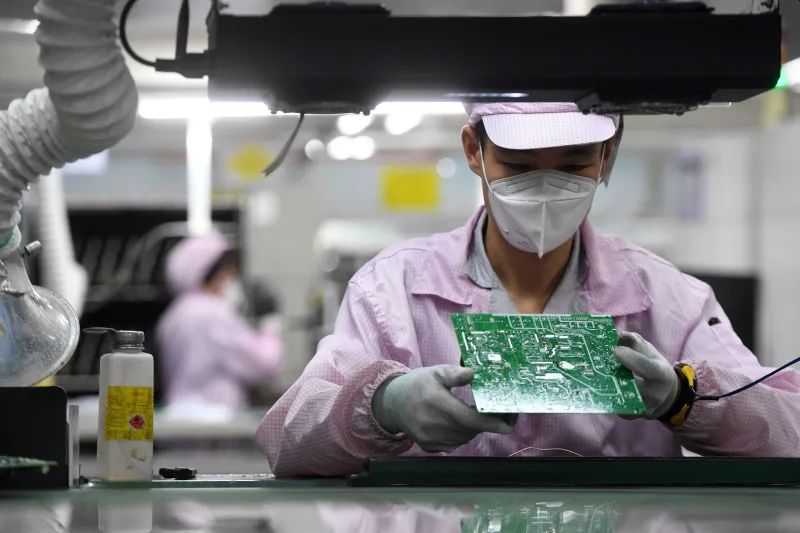
But all is not well with
the U.S. tech sector. Many companies have taken the logic of the smiling curve
too far in recent decades, putting ever more resources into the tips of the
curve while leaving manufacturing capabilities to wither. Since 2000, the
United States has lost around five million manufacturing jobs—about a quarter
of its manufacturing workforce—prompting cascades of skill loss among not just
line workers but also machinists, managers, and product designers. In the long
term, this decline has left the United States in a poor position to dominate
emerging technologies. For example, the United States should have dominated the
solar industry with its science leading the way. And Washington was prepared to
help it do so: as early as 2012, U.S. President Obama imposed tariffs on
Chinese solar imports to protect domestic producers. But even with these
protections, U.S. manufacturers could not compete. Whereas China had ready
access to a huge base of skilled workers and suppliers and could scale up
production almost without limit, the United States, after successive layoffs of
millions of workers, had lost much of its stock of process knowledge and could
not build a healthy manufacturing base. As a result, by 2022, U.S. solar
technology imports reached $8 billion, much of it coming from Chinese companies
producing in Southeast Asia.
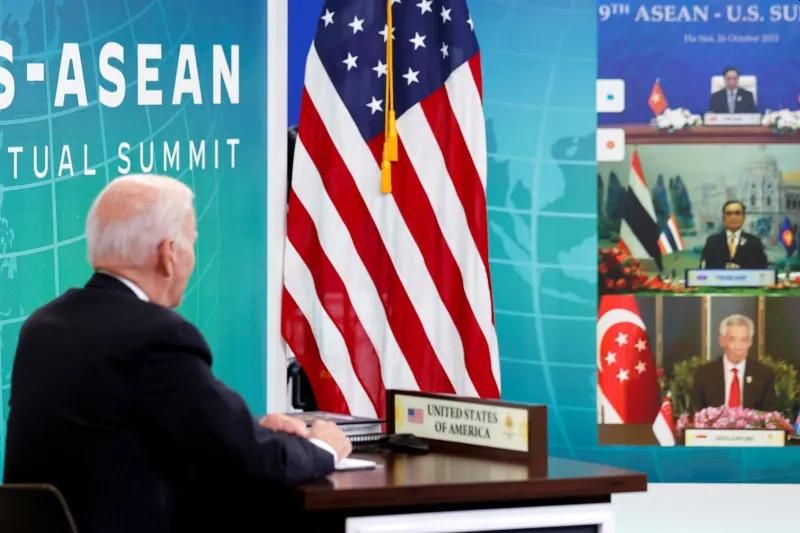
The failure of the
U.S. solar industry is part of a bigger story of decline in U.S. manufacturing.
To a degree, this trend has been driven by increasing automation. But the
sector is also beset by internal weaknesses. Consider the early days of
the COVID-19 pandemic. The United States needed vast personal
protective equipment and other medical supplies like other countries. Yet U.S.
firms struggled to adapt their production lines to make facemasks and cotton
swabs— uncomplicated products by any measure—because they had lost much of the
requisite process knowledge. By contrast, Chinese manufacturers were quickly able
to retool for the emergency and produced many of the medical supplies that the
United States and other countries needed.

So far, U.S. efforts
to re-shore manufacturing jobs from Asia have been disappointing. A big push by
Apple to make more desktop computers in Texas, for example, floundered after
2012 because it lacked a supporting industrial ecosystem of parts. One
exception has been the United States’ rapid production of messenger RNA
vaccines, which have proved more effective than China’s inactivated virus
vaccines. However, to compete against China’s advanced industries in the years
to come, the United States will need far more than a one-off biotech victory.
Scale Up Or Lose Out
Even as it challenges
the West’s approach to tech advances, Beijing has recognized its weakness in
scientific knowledge. In his report to the 20th National Congress of the
Chinese Communist Party in October 2022, Xi declared that science and
technology would be one of the party’s top priorities. And although improving
its research culture will take time, China has been making steady progress,
including in space exploration and quantum communications. Beijing is
especially keen to augment domestic semiconductor development now
that Chinese telecommunications giant Huawei and Chinese chip maker SMIC
have been denied access to U.S. and European semiconductor technologies. One
unintended result of Washington’s new chip restrictions has been to jump-start
Chinese investments in science and R&D.
A platform converting green energy to hydrogen in
Scheveningen, the Netherlands

By contrast, the United
States has yet to come to grips with its deficit in process knowledge.
Certainly, Congress’s passage of the CHIPS Act and the Inflation Reduction Act
in 2022 constitutes major steps forward in industrial policy, given that both
allocate billions of dollars of federal funding for advanced industries. But
too much U.S. policy—including this legislation—is focused on pushing forward
the scientific frontier rather than building the process knowledge and
industrial ecosystems needed to bring products to market. As such, Washington’s
approach to its growing tech rivalry with China risks repeating its mistakes in
the solar industry, with U.S. scientists laying the foundation for a new
technology only to see Chinese firms take the lead in building it. Take the
production of electrolyzers, which extract hydrogen
from water and have become a crucial tool in the production of green
hydrogen. As with solar, China is poised to dominate the green hydrogen
industry by manufacturing the most efficient products at scale.
To avoid repeating
the solar story, the United States will have to give greater priority to
advanced manufacturing. Andy Grove, the legendary CEO of Intel, recognized this
problem a decade ago when he urged the country to focus less on “the mythical
moment of creation” and more on bringing innovations to market. “This is the
phase where companies scale up,” he wrote in an influential article in 2010.
“They work out design details, figure out how to make things affordably, build
factories, and hire people by the thousands.” But to get better at scaling up,
the United States must also learn to think differently about the value of
manufacturing work. Policymakers must resist the urge to scorn manufacturing as
a mere “commoditized activity” that can be done overseas. Instead, the mass
production of new technologies must be seen as equally important to the
innovations themselves. This activity depends on the kinds of deep process
knowledge that can only come from the better training and integration of
workers, engineers, and scientists.
People watching a protest over COVID-19 restrictions,
in Beijing

The new U.S.
investments in tech industries that flow from the CHIPS Act and the Inflation
Reduction Act will help reverse the tide. But as China understands well, money
is only the beginning of building a durable technology sector. Such investments
must also be accompanied by efforts to end the cost overruns that plague U.S. efforts
to build better infrastructure. Local colleges and elite universities must
better train students for advanced manufacturing. And Washington should learn
to follow Beijing’s lead and court greater foreign investment. Like
the Trump administration, the Biden administration has invited Japanese,
South Korean, and Taiwanese firms to build chip factories in the United States;
these companies should also be welcomed for their expertise in batteries and
the broader electronics supply chain.
The economic reality
is that the United States will always be a relatively difficult place to make
things. Because of its smaller population and higher wage requirements—and the
fact that the U.S. dollar remains the global reserve currency, raising the
relative cost of producing goods domestically—the United States cannot
outcompete China in most high-volume manufacturing. Nor is a campaign to
revitalize U.S. manufacturing capability likely to create many jobs; any such
effort will involve highly automated lines that rely more on capital than
labor. And, of course, the United States should not attempt to make everything.
U.S. policy must target strategic industries with a plausible comparative
advantage.
Indeed, the United
States is well-positioned to outperform China in several such industries. The
United States could expand its lead in biotech, semiconductor production
equipment, and aircraft engines by strengthening its manufacturing potential.
It should make sure it keeps next-generation energy technologies such as hydrogen
electrolyzers. And it could attempt to recover some
of the electronics supply chains from Asia. Moreover, in the wake of Beijing’s
repeated COVID-19 lockdowns and after Russia invades Ukraine,
investors are increasingly rattled about the risks of investing in China. The
United States has an exceptional opportunity to win back manufacturing jobs.
But as an ideological starting point, a new industrial policy must be centered
on workers and their process knowledge rather than on financial margins. Otherwise,
it is likely to be China, not the United States, that leads the next
technological revolution.
For updates click hompage here